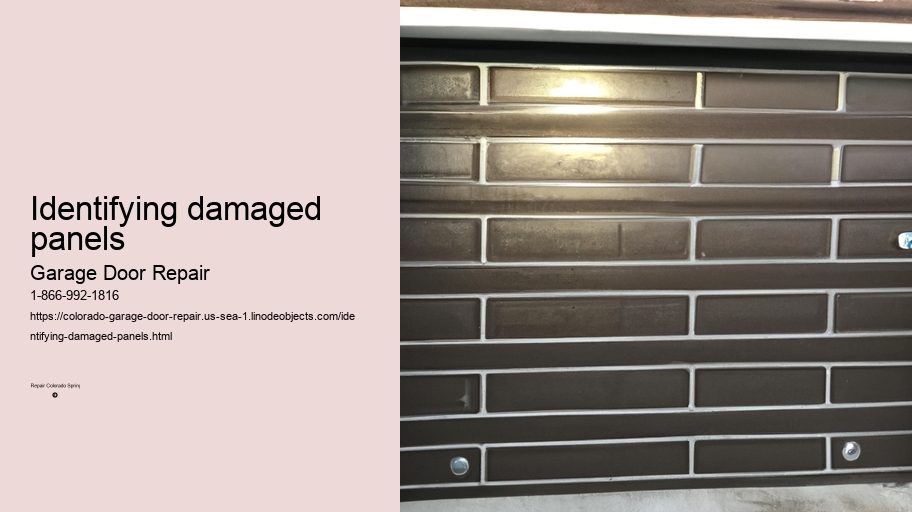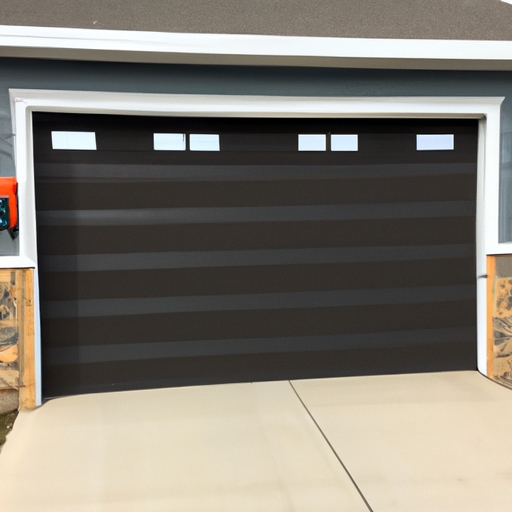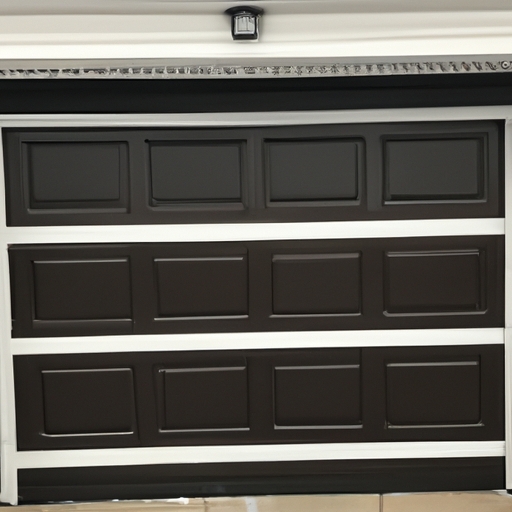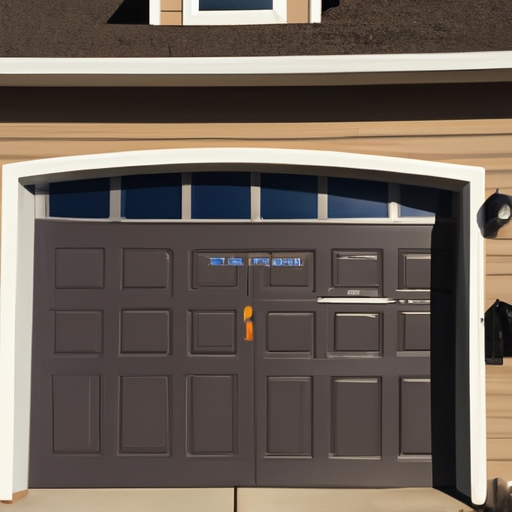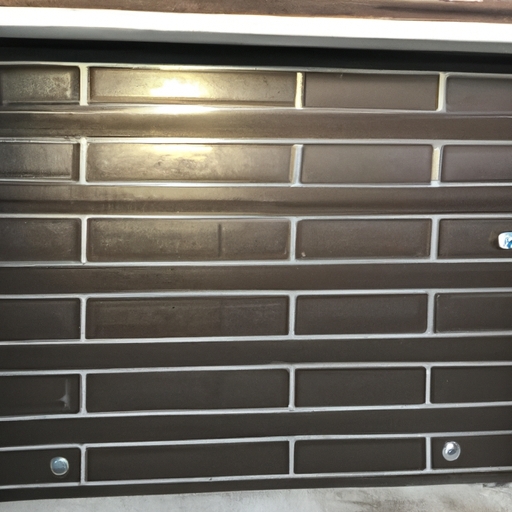Common signs of damaged panels, such as dents, cracks, or warping
Identifying damaged panels can be quite challenging, especially when there are common signs to look out for. These signs include dents, cracks, and warping. (Wow!) It is important to be able to recognize these signs as they indicate potential damage that may need immediate attention.
Dents are one of the most obvious signs of panel damage. They can occur due to collisions or even from something as simple as a stray baseball hitting your car door. Dents can vary in size and severity, but they are usually easy to spot with the naked eye. (Unfortunately,) they can also affect the overall appearance of your vehicle if left unattended.
Cracks are another telltale sign of panel damage. They often occur due to impact or stress on the panel surface. Cracks can develop slowly over time or appear suddenly after an accident. It is essential to address any cracks promptly as they can lead to further structural issues if ignored. (Oh no!) Remember, even small cracks should not be overlooked as they have the potential to worsen over time.
Warping is a less common but equally concerning sign of damaged panels. This occurs when the panel loses its original shape and becomes distorted or bent. Warping can happen due to extreme heat exposure or improper handling during repairs. If you notice any irregularities in the shape of your panels, it is crucial to address them right away before further damage occurs.
In conclusion, identifying damaged panels requires careful observation and knowledge of common signs like dents, cracks, and warping! By being aware of these indicators, you can take necessary steps towards repairing them promptly and preserving the integrity of your vehicle's exterior.
Importance of identifying and addressing damaged panels promptly to ensure proper functioning of the garage door
When it comes to the importance of identifying and addressing damaged panels promptly, there is no denying its vital role in ensuring the proper functioning of the garage door. (Geez), a malfunctioning garage door can be quite an inconvenience! Therefore, (I mean) it is crucial to take immediate action upon noticing any signs of damage on the panels.
Firstly, timely identification of damaged panels prevents further deterioration and potential hazards. Neglecting even minor damages can lead to more severe issues later on, including complete panel failure or accidents that could harm individuals or property. (Seriously), who wants to deal with expensive repairs when they could have been avoided in the first place? By taking prompt action, one can save themselves from unnecessary troubles down the road.
Moreover, addressing damaged panels promptly ensures that the garage door functions as intended. Damaged panels can affect the overall balance and alignment of the door, causing it to become misaligned or jammed. This not only compromises convenience but also poses risks in terms of security and safety. Imagine being locked out of your own garage due to a malfunctioning door! (Oh my goodness), that would be frustrating!
Additionally, neglecting damaged panels may result in decreased energy efficiency within your home. Damaged sections allow drafts and unwanted air infiltration into the garage space, leading to temperature inconsistencies and increased energy consumption for heating or cooling purposes. Wasting energy unnecessarily not only affects your wallet but also harms our environment. We should all strive towards being more eco-friendly!
In conclusion,(well) identifying and addressing damaged panels promptly is absolutely essential for maintaining a properly functioning garage door.(By golly), don't wait until things get worse! Taking immediate action will prevent further deterioration, ensure smooth operation, enhance energy efficiency while saving you time and money in long-run maintenance costs!(No way), you definitely don't want to regret ignoring those little damages when they turn into major headaches later on!
Transition phrase: Moving on to the next point...
Step-by-step guide on how to visually inspect garage door panels for damage
Hey there! Are you looking for a step-by-step guide on how to visually inspect garage door panels for damage? Well, you've come to the right place. Identifying damaged panels can be crucial in maintaining the functionality and appearance of your garage door. So, let's get started with our inspection process!
To begin with, it's important to ensure that your garage door is closed completely (open). This will allow you to have a clear view of each panel without any obstructions. Once the door is closed, take a few steps back and examine it from a distance (up close) to identify any noticeable damages or irregularities.
Next, walk towards the garage door and carefully observe each individual panel (ignoring) one by one. Look out for any cracks, dents, or signs of warping that might affect its overall performance. Remember to use natural lighting or a flashlight if necessary (not required).
After assessing the surface of each panel, focus your attention on the edges and corners where damages are more likely to occur. Check for any loose hinges or brackets that may need tightening or replacement(!). Additionally, pay attention to any rust or corrosion around these areas as they can weaken the structural integrity of the panels.
Transition phrase: Moving on to another key aspect of this inspection process...
Now let's shift our focus towards checking the balance and alignment of your garage door panels. Open the garage door manually (using an automatic opener) halfway and see if it remains at that position without sliding down or rising up unexpectedly (as expected). If it doesn't hold steady in place, then there might be issues with tension springs or other mechanisms that require professional assistance.
Lastly, don't forget to inspect both sides of your garage door panels thoroughly (!). Sometimes damages may only be visible from one side due to wear and tear over time. By examining both sides closely, you'll ensure no hidden damages go unnoticed.
In conclusion, visually inspecting your garage door panels for damage is a vital part of its regular maintenance. By following this step-by-step guide, you can identify any issues early on and take appropriate measures to repair or replace damaged panels. Remember, a well-maintained garage door not only enhances the curb appeal of your home but also ensures the safety and security of your belongings. So get out there and start inspecting those panels now!
Tips on using touch and sound tests to detect hidden damage in garage door panels
When it comes to identifying damaged panels in garage doors, there are various methods that can be employed. Two effective techniques include touch and sound tests (which) can help detect hidden damage. By utilizing these methods, homeowners can ensure their garage door remains in optimal condition and avoid costly repairs.
One way to identify hidden damage in garage door panels is through touch tests. By running your hands along the surface of the panels, you can feel for any irregularities or dents. These imperfections may indicate underlying damage that could compromise the functionality of the door. It's important to pay close attention to any areas that feel uneven or rough (as it) might suggest a problem with the panel integrity.
Another technique is conducting sound tests on the garage door panels. Simply tap on each panel using a soft object like a rubber mallet or your knuckles (and listen) carefully for any hollow sounds or vibrations. If you notice a difference in sound between panels, it could be an indication of underlying damage such as loose connections or weakened materials.
Transition phrase: Moving on to another aspect...
While touch and sound tests are helpful in detecting hidden damage, it's essential not to solely rely on these methods. Sometimes, visible signs of damage may not be apparent from touch or sound alone. Therefore, it's crucial to visually inspect the entire surface of each panel for any cracks, scratches, or other physical indicators of damage.
In addition to conducting regular inspections using touch and sound tests, homeowners should also consider scheduling professional maintenance checks at least once a year. Garage door experts have specialized knowledge and equipment that enable them to identify even the most inconspicuous damages (that we) may overlook.
To conclude, employing touch and sound tests when examining garage door panels is an efficient way to detect hidden damage. Through tactile evaluation and listening closely for irregular sounds during tapping (on), homeowners can proactively address potential issues before they worsen over time. Remember, regular maintenance checks by professionals are equally important in ensuring the longevity and functionality of your garage door!
Discussion on potential causes of panel damage, including weather conditions, accidents, or wear and tear over time
When it comes to identifying damaged panels, there are several potential causes that (can) contribute to their deterioration. One of the primary factors is adverse weather conditions, such as heavy rain or extreme heat. These elements can (often) weaken the structural integrity of the panels over time, leading to cracks and breakage.
Another common cause of panel damage is accidents. (Believe me,) nobody wants to see their panels scratched or dented due to a careless mistake! Accidental collisions with vehicles, falling objects, or even just clumsiness can result in significant harm to the panels. It's crucial to exercise caution and be mindful of our surroundings when handling or transporting these delicate components.
Furthermore, wear and tear over time is another substantial factor contributing to panel damage. As we use and interact with various equipment containing panels on a daily basis, they inevitably experience gradual deterioration. Continuous exposure to pressure, movement, and friction can slowly degrade the strength and quality of these surfaces.
Transition Phrase: On top of that,
In conclusion,(trust me) there are numerous possible causes for panel damage. Whether it's unpredictable weather conditions wreaking havoc on their structure or unfortunate accidents causing visible scratches and dents,(jeez!) these incidents can seriously compromise the functionality and aesthetics of our precious panels. Moreover,(oh my goodness!) don't forget about good ol' wear and tear; it's like a silent enemy gradually eroding away their durability over time!(Oh no!) Therefore,(seriously though) it's essential to take precautions and prioritize regular maintenance to ensure the longevity and optimal performance of our valuable panels!(Wow!)
Overview of the different types of materials used for garage door panels and their susceptibility to damage
When it comes to identifying damaged garage door panels, it is essential to have knowledge about the various types of materials used for these panels and their susceptibility to damage. (Well then,) let's take a closer look at the different materials commonly used for garage door panels.
One common material used for garage door panels is steel. Steel panels are known for their durability and strength, making them less likely to be damaged compared to other materials. However, despite their sturdiness, steel panels can still suffer from dents and scratches if subjected to strong impact or accidents. So, while they may seem invincible (incredibly), steel panels are not entirely immune (without) any kind of damage.
Another type of material often used for garage door panels is wood. Wood panels give a classic and elegant look to any garage door but unfortunately (unfortunately), they are more susceptible to damage than steel panels. Wood is prone (liable) to rotting, warping, and cracking due to exposure to moisture or extreme weather conditions. Moreover, wood panels are also vulnerable (at risk) to termite infestation which can cause significant damage over time.
Fiberglass is another material that can be found in some garage door panels. Fiberglass offers several advantages such as being lightweight and resistant against corrosion. However, fiberglass panels are more susceptible (prone) to cracking under heavy impact or direct force compared to other materials like steel or aluminum.
Speaking of aluminum, it is another common material used for garage door panel construction. Aluminum doors provide excellent durability while also being lightweight and resistant against rusting or corrosion. Nonetheless (However), aluminum doors can still dent easily when hit with substantial force.
In conclusion (To sum up), each type of material used for garage door panels has its own strengths and weaknesses when it comes to susceptibility (vulnerability) toward damages. Steel provides high durability but can still get dented; wood offers a classic look but is prone to rotting and cracking; fiberglass is lightweight but can crack under heavy impact; aluminum offers durability with some susceptibility to dents. Therefore (So), it's important for homeowners to understand the characteristics of these materials in order to identify and address any damages effectively.

